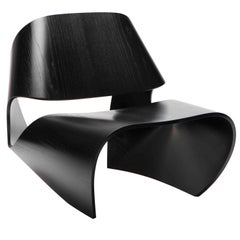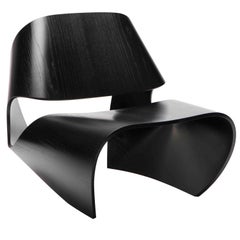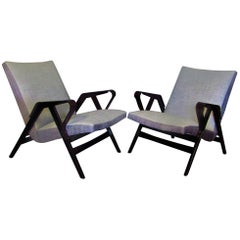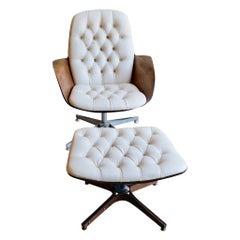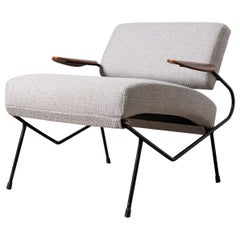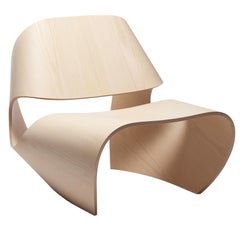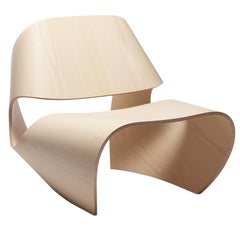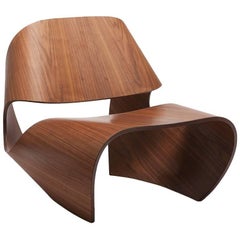Bent Plywood Lounge Chair
2010s Belgian Minimalist Lounge Chairs
Ash, Walnut
2010s British Minimalist Lounge Chairs
Ash, Walnut
2010s British Minimalist Lounge Chairs
Ash, Walnut
Vintage 1950s Czech Mid-Century Modern Armchairs
Fabric, Wood
Mid-20th Century American Mid-Century Modern Lounge Chairs
Chrome
Vintage 1960s American Mid-Century Modern Lounge Chairs
Iron
2010s British Minimalist Lounge Chairs
Ash, Walnut
2010s British Minimalist Lounge Chairs
Ash, Walnut
2010s British Minimalist Lounge Chairs
Ash, Walnut
2010s British Minimalist Lounge Chairs
Ash, Walnut
Mid-20th Century American Mid-Century Modern Lounge Chairs
Velvet, Cane, Plywood
20th Century American Mid-Century Modern Lounge Chairs
Upholstery, Birch
Vintage 1960s Swiss Mid-Century Modern Lounge Chairs
Metal
Late 20th Century Unknown Other Lounge Chairs
Plywood
Late 20th Century Norwegian Scandinavian Modern Lounge Chairs
Leather, Bentwood
Vintage 1970s American Mid-Century Modern Lounge Chairs
Chrome
Vintage 1960s American Mid-Century Modern Lounge Chairs
Leather
Vintage 1960s Norwegian Mid-Century Modern Lounge Chairs
Leather, Teak
Vintage 1960s Norwegian Mid-Century Modern Lounge Chairs
Leather, Teak
Late 20th Century American Mid-Century Modern Chairs
Bentwood
Vintage 1940s Dutch Lounge Chairs
Plywood
20th Century Dutch Mid-Century Modern Lounge Chairs
Enamel, Steel
Vintage 1950s American Mid-Century Modern Lounge Chairs
Upholstery, Plywood
Vintage 1960s Czech Mid-Century Modern Lounge Chairs
Fabric, Foam, Beech
Vintage 1960s Czech Mid-Century Modern Lounge Chairs
Velvet, Foam, Plywood
Vintage 1960s Czech Mid-Century Modern Lounge Chairs
Fabric, Foam, Plywood
Vintage 1960s Czech Mid-Century Modern Lounge Chairs
Velvet, Wood
Vintage 1960s Dutch Mid-Century Modern Lounge Chairs
Fabric, Wood
Vintage 1960s Dutch Mid-Century Modern Lounge Chairs
Fabric, Wood
Vintage 1950s Dutch Mid-Century Modern Lounge Chairs
Plywood, Upholstery
20th Century American Mid-Century Modern Lounge Chairs
Vintage 1960s Czech Mid-Century Modern Lounge Chairs
Fabric, Foam, Beech
Vintage 1960s Czech Mid-Century Modern Lounge Chairs
Foam, Beech, Fabric
Vintage 1960s Dutch Mid-Century Modern Armchairs
Birch, Canvas
Vintage 1960s Danish Scandinavian Modern Furniture
Leather, Canvas, Bentwood
Mid-20th Century Czech Mid-Century Modern Armchairs
Beech, Bentwood, Upholstery
Vintage 1970s Dutch Mid-Century Modern Lounge Chairs
Bouclé, Plywood
Mid-20th Century North American Mid-Century Modern Lounge Chairs
Plywood
Vintage 1960s Lounge Chairs
Iron
20th Century American Mid-Century Modern Lounge Chairs
Mohair, Upholstery
Vintage 1960s Mexican Mid-Century Modern Lounge Chairs
Chrome
2010s American Modern Lounge Chairs
Plywood
Mid-20th Century American Mid-Century Modern Lounge Chairs
Cane, Plywood, Velvet
Mid-20th Century Dutch Mid-Century Modern Lounge Chairs
Steel
Mid-20th Century North American Mid-Century Modern Lounge Chairs
Wood
Vintage 1950s English Scandinavian Modern Lounge Chairs
Beech, Plywood
Vintage 1970s American Mid-Century Modern Chaise Longues
Upholstery, Plywood
20th Century American Mid-Century Modern Lounge Chairs
Chrome
Late 20th Century American Mid-Century Modern Swivel Chairs
Fabric, Wood
20th Century American Armchairs
Steel
Vintage 1940s American Armchairs
Naugahyde, Plywood
Vintage 1960s Swiss Mid-Century Modern Swivel Chairs
Metal, Chrome
Vintage 1960s Czech Mid-Century Modern Lounge Chairs
Wood, Velvet
Vintage 1980s American Post-Modern Lounge Chairs
Plywood
Vintage 1960s Czech Mid-Century Modern Lounge Chairs
Fabric, Foam, Beech
Vintage 1960s Czech Mid-Century Modern Lounge Chairs
Velvet, Beech
Vintage 1960s Dutch Mid-Century Modern Lounge Chairs
Birch, Canvas
Vintage 1960s Czech Mid-Century Modern Chairs
Upholstery, Wood
- 1
Bent Plywood Lounge Chair For Sale on 1stDibs
How Much is a Bent Plywood Lounge Chair?
Finding the Right Lounge-chairs for You
While this specific seating is known to all for its comfort and familiar form, the history of how your favorite antique or vintage lounge chair came to be is slightly more ambiguous.
Although there are rare armchairs dating back as far as the 17th century, some believe that the origins of the first official “lounge chair” are tied to Hungarian modernist designer-architect Marcel Breuer. Sure, Breuer wasn’t exactly reinventing the wheel when he introduced the Wassily lounge chair in 1925, but his seat was indeed revolutionary for its integration of bent tubular steel.
Officially, a lounge chair is simply defined as a “comfortable armchair,” which allows for the shape and material of the furnishings to be extremely diverse. Whether or not chaise longues make the cut for this category is a matter of frequent debate.
The Eames lounge chair, on the other hand, has come to define somewhat of a universal perception of what a lounge chair can be. Introduced in 1956, the Eames lounger (and its partner in cozy, the ottoman) quickly became staples in television shows, prestigious office buildings and sumptuous living rooms. Venerable American mid-century modern designers Charles and Ray Eames intended for it to be the peak of luxury, which they knew meant taking furniture to the next level of style and comfort. Their chair inspired many modern interpretations of the lounge — as well as numerous copies.
On 1stDibs, find a broad range of unique lounge chairs that includes everything from antique Victorian-era seating to vintage mid-century modern lounge chairs by craftspersons such as Hans Wegner to contemporary choices from today’s innovative designers.
Read More
All the Furniture in This Organic Modern Soho Loft Can Be Yours
Andrianna Shamaris has filled her epic new home with pieces of her own design.
20 Inviting Dining Rooms Perfectly Arranged for Entertaining
Top interior designers show — and tell — us how to create delectable spaces for hosting dinner parties.
Nobody Puts This Sunny Sofa in a Corner
With its plush cushions, cane details and dazzlingly colorful back, it’s inviting from every angle.
The 21 Most Popular Mid-Century Modern Chairs
You know the designs, now get the stories about how they came to be.
Fred Rigby’s Modular Seating Can Be Configured in So Many Handy Ways
The plush Cove Slipper 2.5 Seater sofa is just one of many convenient combinations from the London-based maker.
This Chubby-Chic Quilted Stool Stands on Its Own Two Feet
Sam Klemick's cool stool is edgy, cozy and environmentally sustainable all at once.
Is Lionel Jadot the Willy Wonka of Upcycled Belgian Design?
From his massive collaborative workshop in a former paper factory, the designer concocts funky furniture from disused materials, as well as luxe hotel interiors like the new Mix Brussels.
Rock Your Cares Away on This Sunny Hand-Crocheted Swing
The boho-chic Enchanted Forest Swing, handmade by marginalized women from Turkey and Syria, is uplifting in every way.

